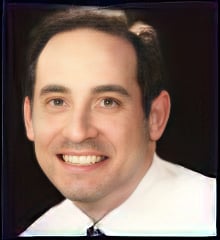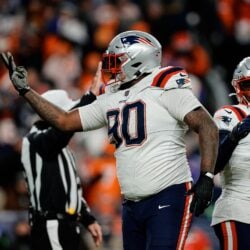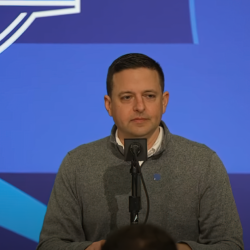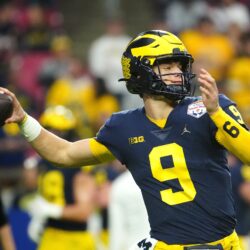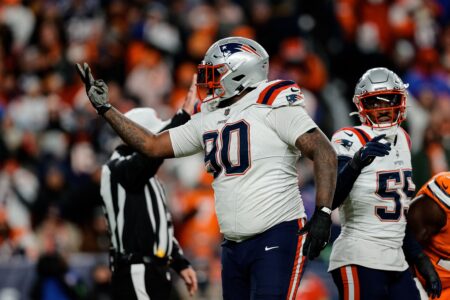Bill Belichick's Saturday FULL Transcription: "I'm embarrassed to talk about the amount of time that I've put into this"
Here's the full transcription of Bill Belichick's press conference on Saturday with the Patriots media.
OPENING STATEMENT:
"So I want to take this opportunity to share some information. I spent a significant amount of time this past week learning as much as I could learn, more than I could ever imagine, to tell you the truth about bladders, air gauges, stitching, pressure, game day ball preparation, rubdowns, and so forth... Trying to be as helpful as I can here and share with you what I've learned having coached for 40 years in the National Football League, played for several years growing up in a football family, being around this game my entire life, it's clear that I don't know much about this area. Over the last few days I've learned a lot more than I ever knew, like exponentially more. I feel like this is important because there have been questions raised and I believe now 100% that I have personally and we as an organization have absolutely followed every rule to the letter and I just feel that on behalf of everyone in the organization, everyone that's involved in this organization, that we need to say something."
"I've talked to and gathered a lot of information from members of our staff. I have talked to other people familiar with this subject in other organizations and we have performed an internal study of the process and I think there's certainly other things that I can do and there's maybe other research that can be done, but I'd say at this time I definitely have enough information to share with you. And so based on the events of today, I feel like now's the time to do it rather than wait and so I know this is kind of an impromptu thing but that's just the way it worked out."
"First of all, let me start with the process. As Tom explained on Thursday, the most important part of the football for the quarterback is the feel of the ball. I don't think there's any question about that. And the exterior feel of the ball is not only critical, but it's also very easily identifiable. When I feel a football, I can feel the difference between slippery and tacky. I can feel the difference of the texture of the ball of to what degree it's broken in. If you put five balls out there, which ball's broken in the most, which ball's broken in the least, that's easy to identify and that's the essence of the preparation. We prepare our balls over time and we use them in practice, and that preparation process continues right up until the balls are given to the officials prior to the game. That's when they are finalized - if I can use that word. I would say that in that process, I've handled dozens of balls over the past week. The texture of the balls is very easy to identify. The pressure of the balls, footballs, is a whole different story. It's much more difficult to feel or identify. So the focus of our pregame preparation for the footballs is based on texture and feel, and I think Tom went into that extensively on Thursday and he obviously could go through it a lot better than I can because he's the one that touched them, but that's the heart of the process."
"So we simulated a game day situation in terms of the preparation of the footballs and where the footballs were at various points in time during the day or night as the case was Sunday and I would say that our preparation process for the footballs is what we do, I can't speak for anybody else, it's what we do and that process, we have found, raises the psi approximately one pound. So that process of creating a tackiness, a texture, the right feel, whatever that feel is, it's a sensation for the quarterback - what's the right feel - that process elevates the psi approximately one pound based on what our study showed, which was multiple balls, multiple examples in the process as we would do for a game. It's not one football. When the balls are delivered to the officials' locker room, the officials were asked to inflate them to 12.5 psi, what exactly they did, I don't know, but for the purposes of our study, that's what we did. We set them at 12.5. That's at the discretion of the official though, regardless of what we ask for, it's the official's discretion to put them where he wants."
"Again, that's done in a controlled climate. The footballs are prepared in our locker room, they're delivered to the officials' locker room, Which is a controlled environment, it's whatever we have here, is what we have there. When the footballs go out onto the field into game conditions, whatever those conditions are, whether it's hot and humid, whether it's cold and damp, whether it's cold and dry, whatever it is, that's where the footballs are played with and that's where the measurements would be different than what they are, possibly different than what they are, in a controlled environment, and that's what we found. We found that once the footballs were on the field over an extended period of time, in other words, they were adjusted to the climatic conditions and also the fact that the balls reached an equilibrium without the rubbing process, after that had run it's course and the footballs had reached an equilibrium, that they were down approximately one and a half pounds per square inch. When we brought the footballs back in after that process and retested them in a controlled environment as we have here, then those measurements rose approximately one half pound per square inch. So the net of one and a half, back to a half, is approximately one pound per square inch, to one and a half."
"Now we all know that air pressure is a function of the atmospheric conditions, it's a function of that. So if there's activity in the ball relative to the rubbing process, I think that explains why when we gave them to the officials and the officials put it at let's say twelve and half, if that's in fact what they did, that once the ball reached its equilibrium state, it probably was closer to eleven and a half. But, again, that's just our measurements we can't speak specifically to what happened because we have no way of touching the footballs other than once the officials have them, we don't touch them except or when we play with them in the game. But it's similar to the concept of when you get into your car and the light comes on and it says low tire pressure because the car's been sitting in the driveway outside overnight and you start it up and you start driving it and the light goes off, it's a similar concept to that. So the atmospheric conditions as well as the true equilibrium of the ball is critical to the measurement. At no time were any of our footballs prepared anywhere other than in the locker room, or in an area very close to that. Never in a heated room or heated condition, that has absolutely never taken place to anyone's knowledge or anyone's recollection and I mean, that just didn't happen."
"When you measure a football, there are a number of different issues that come up. Number one, gauges, there are multiple types of gauges and the accuracy of one gauge relative to another, there's variance there, we're talking about air pressure, all right? So there's some variance there. Clearly all footballs are different. So footballs that come out of a similar pack, a similar box, a similar preparation, each ball has its own unique individual characteristics because it's not a man-made piece of equipment. It's an animal's skin, it's a bladder, it's stitching, it's laces and each one has its own unique characteristics. So whatever you do with that football, if you do the same thing with another one, it might be close, but there's a variance between each individual football. Footballs do not get measured during the game. We have no way of knowing, until we went through this exercise, that this has really taken place. So when we hand the balls to the officials, the officials put them at, whatever they put them at, but let's just say it's twelve-and-a-half, that's where they put them. Then the air pressure at that point from then on until the end of the game, we have no knowledge and honestly it's never been a concern. So what is a concern is the texture of the footballs, and again, that's the point that Tom hit on hard on Thursday."
"We had our quarterbacks look at a number of footballs and they were unable to differentiate a one pound per square inch difference in those footballs. They were unable to do it. On a two pound differential, there was some degree of differentiation, but certainly not a consistent one. A couple of ones they could pick out, but they were also wrong in some of the other ones that they had. So you're welcome to do that yourself and I can tell you from all of the footballs I've handled over the last week, I can't tell the difference if there's a one pound difference or half a pound difference in any of the footballs."
"Again, anyone who has seen us practice knows that we make it harder, not easier, to handle the ball and our players train in conditions that a lot of people would recommend that we not drive in. That's what they do. They're a physically and mentally tough team that works hard, that trains hard, that prepares and have met every challenge that I've put in front them. And I know that, because I work them every day. This team was the best team in the AFC in the regular season. We won two games in the playoffs against two good football teams. The best team in the postseason, and that's what this team is and I know that because I've been with them every day and I'm proud of this team."
"So I just want to share with you what I've learned over the past week. I'm embarrassed to talk about the amount of time that I've put into this relative to the other important challenge in front of us. I'm not a scientist. I'm not an expert in footballs. I'm not an expert in football measurements. I'm just telling you what I know. I would not say that I'm Mona Lisa-Vito of the football world as she was in the car expertise area, all right? And at no time was there any intent whatsoever to try to compromise the integrity of the game or to gain an advantage, quite the opposite. We feel like we followed the rules of the game to the letter in our preparations, in our procedures, and in the way that we handle every game that we competitively play in as it relates to this matter. We try to do everything right, we try to err on the side of caution, it's been that way now for many years. Anything that's close, we stay as far away from the line as we can. And in this case I can say that we are, as far as I know in everything that I can do, we did everything as right as we could do it. And we welcome the league's investigation into this matter. I think there are a number of things that need to be looked into, on a number of levels, but that's not for this conversation, I'm sure it will be taken up at another point in time. And this is the end of this subject for me, for a long time. O.K.? We have a huge game, a huge challenge for our football team, and that's where that focus is going to go. I've spent more than enough time on this and I'm happy to share this information with you to try to tell you some of the things that I have learned over the last week, which I've learned way more than I ever thought I would learn. The process, the whole thing, is much more complex... I mean there are a lot of variables that I was unaware of. It sounds simple, and I'm not trying to say that we're trying to land a guy on the moon, but there's a lot of things here that are a little hard to get a handle on and again, there's a variance in so many of these things."
"So I'll take a couple questions, and then I'm moving on."
On if the NFL shares with him the pregame documented psi:
"You would have to talk to the NFL about anything they did or didn't do."
On if he doesn't know if they documented it:
"Look, Tom [Curran of CNNSE], we could sit here and talk about some of this stuff for two hours. All right? You want to ask the league any questions about what they do or don't do, you should ask the league. I'm just telling you what I've learned and the study that we've done and the experience that I've had over the last few days in looking into this matter. That's all I can tell you. I'm not a scientist and I'm not a league official."
On if he feels after the work he put in this week if they'll be exonerated:
"I just told you what I think. That's what I think right there."
On if the game preparation has been compromised over the time they've spent on this:
"Well, I've spent a lot the week game planning, a lot of this week, yeah."
On if he feels that any of it was compromised spending time on this:
"Look, I told you, I thought this was an important issue and we addressed it. So we did."
On reiterating that he felt it was the atmospheric conditions and trusting that the officials filling the balls to 12.5 psi:
"Look, you take the atmospheric conditions out of it, because if the balls are measured in the same atmospheric conditions, than it's a non-factor. But if you measure a ball in a controlled condition like this and you measure a ball on, let's just say the night that we played Baltimore, there's no way they're the same. You take that ball and set it outside and the ball becomes accustomed to those climatic conditions and those temperatures, there's no way it's the same. Now if you take it out and bring it back in and let it sit for x amount of time, then, you know, it probably is the same. So no, that's not the issue, although depending on where balls were measured and how they were measured, I mean, that's a whole other discussion. The situation is the preparation of the ball caused the ball to, I would say, be artificially high in psi when it was set to the regulated level and then it reached its equilibrium at some point later on, an hour, two hours, into the game, whatever it was, that that level was below what was set in this climatic condition. I think that's exactly what happened. And I think anybody who wants to do those experiments should go ahead and do it themselves. Don't take my word for it. But, I'm telling you, we're trying to get an answer to this, and that's what we have."
On the fact he tries to err on the side of caution and stay on that side of the rules, but the videotaping, it was clear that they were pushing that:
"I mean, look, that's a whole other discussion. The guy's giving signals out in front of eighty thousand people, O.K.? So we filmed him taking signals out in front of eighty thousand people like there were a lot of other teams doing at that time too, O.K.? But forget about that. If we were wrong, than we've been disciplined for that."
On the fact that's clearly not trying to err on the side of caution:
"The guy's in front of eighty thousand people. Eighty thousand people saw it, everybody's sideline saw it, everybody sees our guy in front of eighty thousand people. I mean, there he is. So it was wrong, we were disciplined for it, that's it. We never did it again, we're never going to do it again and anything else that's close, we're not going to do either."
On the fact he just said they always err on the side of caution:
"We always do. We always have. But I mean, anything that's even remotely close, we're on the side of caution."
On if they had any science people help in the investigation:
"We talked to a lot of people."
On how much time they spent on it:
"I don't know, I didn't log it."
On if he's relieved by what he found with their investigation:
"Look, I came in here Thursday and I told you that I didn't have any answers. And I'm very confident in the things that we've talked about, the study that we did, the going through with a fine tooth comb, everything, I'm 100% confident in everything that I've told you. That's what I believe, that's what I know, that's what it is. I'm as transparent as I can be on this one. Period."
On if that's a "yes" that he's relieved by their study:
"I did what I did, no, I'm not using those adjectives. I told you what I did, that's what it is."
On if he thinks there's something that happened for it to rise 1.5, did they put them in front of heaters, dryers:
"No, it was never put in front of a heater, I just said that."
On when they're preparing it, what made it rise:
"You rub it, you try to get the texture the way the quarterback wants it."
On the fact he's just trying to establish...
"I just said that. And I said that in no time was the ball ever put in any type of a heated environment."
On them rubbing the football vigorously...
"We rub it to get the ball to the proper texture. I mean I don't know what's vigorous, what isn't vigorous, I mean we're not polishing fine China here. We're trying to get a football to the proper texture that the quarterback wants it to grip it. Does that stimulate something inside the ball to raise the psi? I would say yes, it does."
On after all the research they've done what they do differently moving forward:
"Well, you're getting into another whole area here. You're getting into a another whole area as it relates to the next game. Yes"
On if they're trying to prevent it [Inaudible]:
"That's exactly right. And that's exactly why this whole process was done, for that very reason. And I don't know the answer to that question, but that's a very important question."


